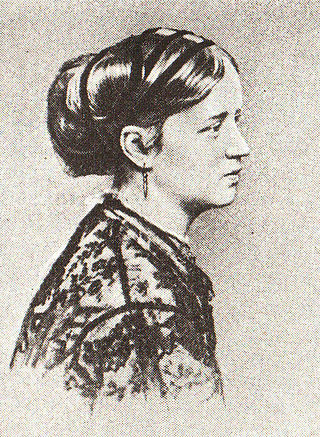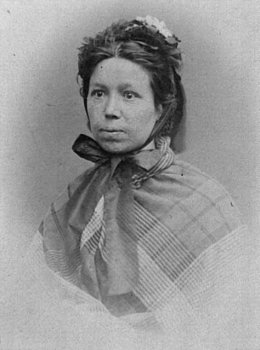
The Paris Commune was a French revolutionary government that seized power in Paris from 18 March to 28 May 1871. During the Franco-Prussian War of 1870–71, the French National Guard had defended Paris, and working-class radicalism grew among its soldiers. Following the establishment of the Third Republic in September 1870 and the complete defeat of the French Army by the Germans by March 1871, soldiers of the National Guard seized control of the city on March 18. They killed two French army generals and refused to accept the authority of the Third Republic, instead attempting to establish an independent government.

The Place de la Concorde is one of the major public squares in Paris, France. Measuring 7.6 ha in area, it is the largest square in the French capital. It is located in the city's eighth arrondissement, at the eastern end of the Champs-Élysées.

The Tuileries Palace was a royal and imperial palace in Paris which stood on the right bank of the Seine, directly in front of the Louvre Palace. It was the Parisian residence of most French monarchs, from Henry IV to Napoleon III, until it was burned by the Paris Commune in 1871.

Louis Tullius Joachim Visconti was an Italian-born French architect and designer.

Anne Jaclard, born Anna Vasilyevna Korvin-Krukovskaya (1843–1887), was a Russian socialist and feminist revolutionary. She participated in the Paris Commune and the First International and was a friend of Karl Marx. She was once courted by Fyodor Dostoyevsky, who published two of her stories in his journal. Her sister was the mathematician and socialist Sofia Kovalevskaya (1850–1891).
Jacques Rougerie was a French historian of the Paris Commune.

The semaine sanglante was a weeklong battle in Paris from 21 to 28 May 1871, during which the French Army recaptured the city from the Paris Commune. This was the final battle of the Paris Commune.
The Battle of Meudon took place on 3 April 1871 between the Paris Commune and Versaillais government forces near Meudon in the Île-de-France. The battle was part of the attempts by the Paris Commune to seize Versailles, the seat of Adolphe Thiers’ government, and it ended in a defeat for the Federates.

The Pavillon de Marsan or Marsan Pavilion was built in the 1660s as the northern end of the Tuileries Palace in Paris, and reconstructed in the 1870s after the Tuileries burned down at the end of the Paris Commune. Following the completion of the joining of the Louvre and the Tuileries in the 1850s and the demolition of the Tuileries' remains in the early 1880s, it is now the northwestern tip of the Louvre Palace. Since 1897 it has been part of the Musée des Arts Décoratifs, a separate institution from the Louvre.

Élisabeth Rétiffe was a French cardboard maker, socialist activist, ambulance worker and communard. She was condemned to death for her action during the Paris Commune, where she was sentenced to perform hard labor before she was deported to Guyana.
Béatrix Excoffon, born Julia Euvrie or Œuvrie was a militant communard who served as an ambulance nurse during the Paris Commune in 1871. She was vice-president of the Club des Femmes de la Boule Noire, and was known as "the republican".
Marie Catherine Rogissart was a militant communard in the 12th arrondissement during the Paris Commune in 1871. She was a member of Club Éloi and the standard-bearer of the Federated Legion of Women. Arrested and deported to New Caledonia, she chose to remain there after the end of her sentence. In 1929, she was the last surviving communard deportee on the island.

The Federated Legion of Women was an armed unit composed of women active during the Paris Commune in May 1871. It was founded in the 12th arrondissement, with the intended mission of hunting down deserters. The legion had uniforms, parades, and a standard-bearer, and was led by two officers, Colonel Adélaïde Valentin and Captain Louise Neckbecker. There were an estimated 20-100 members, most from working-class backgrounds. They held and attended meetings in Parisian political clubs, where they incited citizens to take up arms. After the defeat of the Commune, arrested members were given heavy sentences, including forced labour and deportation.

Adélaïde Valentin, also known as Colonel Valentin, was a labourer and communard. She was, during the last month of the Paris Commune, the colonel of the Federated Legion of Women.
The Paris Commune was an insurrectionary period in the history of Paris that lasted just over two months, from 18 March 1871 to the Semaine sanglante that ended on 28 May 1871. This insurrection refused to recognize the government of the National Assembly of 1871, which had just been elected by universal male suffrage. Many women took active roles in the events, and are known as "communardes". They are important in the history of women's rights in France, particularly with regards to women's emancipation. Equal pay and the first forms of structured organization of women in France appear during this period, in particular the Union des femmes pour la défense de Paris et les soins aux blessés or the Comité de vigilance de Montmartre.

Léontine Suétens (1846-1891) was a laundress and a communard. She was convicted in the trial of the "pétroleuses", which began 3 September 1871.

Eulalie Papavoine. She was a Parisian seamstress. She participated in the Paris Commune as an ambulance nurse.

Joséphine Marguerite Marchais, née Rabier, was a French day labourer who was an active participant in the Paris Commune in 1871. Arrested while carrying weapons, she was condemned to death. Her sentence was commuted to forced labour, and she was deported to Guiana.

Anne-Marie Ménand, née Marie LouiseMénan was a cook who was accused of being an arsonist during the Paris Commune. She was arrested, brought before the military tribunal, and sentenced to death. Her sentence was commuted and she was instead deported to French Guiana.

The fires of Paris during the Commune were the premeditated destruction of monuments and residential buildings in Paris mainly during Bloody Week, the period when Paris was recaptured by the Versailles army from Sunday, May 21 to Sunday, May 28, 1871.















